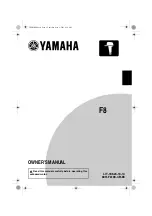
DEMOQE128 User Manual
35
7.2
Serial Accelerometer Application
This microcontroller application samples the state of the on-board three-axis
accelerometer using on-chip A/D converter channels. This data is converted
into ASCII characters and sent out using the serial pins of the QE128
processor. These serial pins may be connected to either serial port hardware
or to P&E’s virtual serial port (which is part of the Embedded Multilink design).
This connection is controlled by jumpers J6 and J7.
P&E has two PC-based DEMOQE Toolkit applications which allow the serial
port data generated by this application to be graphed. These are documented
in
Section 6.4 - DEMOQE Accelerometer Demo Application
and
Section
6.5 - DEMOQE Serial Grapher Application
.
Usage of this application is documented in the
Section 3.4 - LAB 3: Measure
Performance between 8-Bit and 32-Bit
.
8
JUMPER SETTINGS
8.1
System Power
The QE128 processor may obtain its power from either the on-board
regulator, a 2-cell battery pack, or through MCU_PORT J1. The on-board
regulator obtains its input from either the Embedded Multilink circuitry or a
2.5mm barrel connector. The on-board regulator can regulate the output to
either 2.1V or 3V. The DEMOQE128 is fully functional at both voltages. Power
input and voltage selection are achieved by using 3 option headers.
8.1.1
J3 - Regulator Input Selection Jumper
Jumper 3 determines whether the DEMOQE128’s on-board regulator obtains
its power from the DC power jack or from the Embedded Multilink circuitry.
The regulator input selection is mutually exclusive. It prevents power input
contention from damaging the board and the host.
Figure 8-1
shows the
regulator input selection details.
Select regulator input from DC power jack. A 5-12VDC center
















































